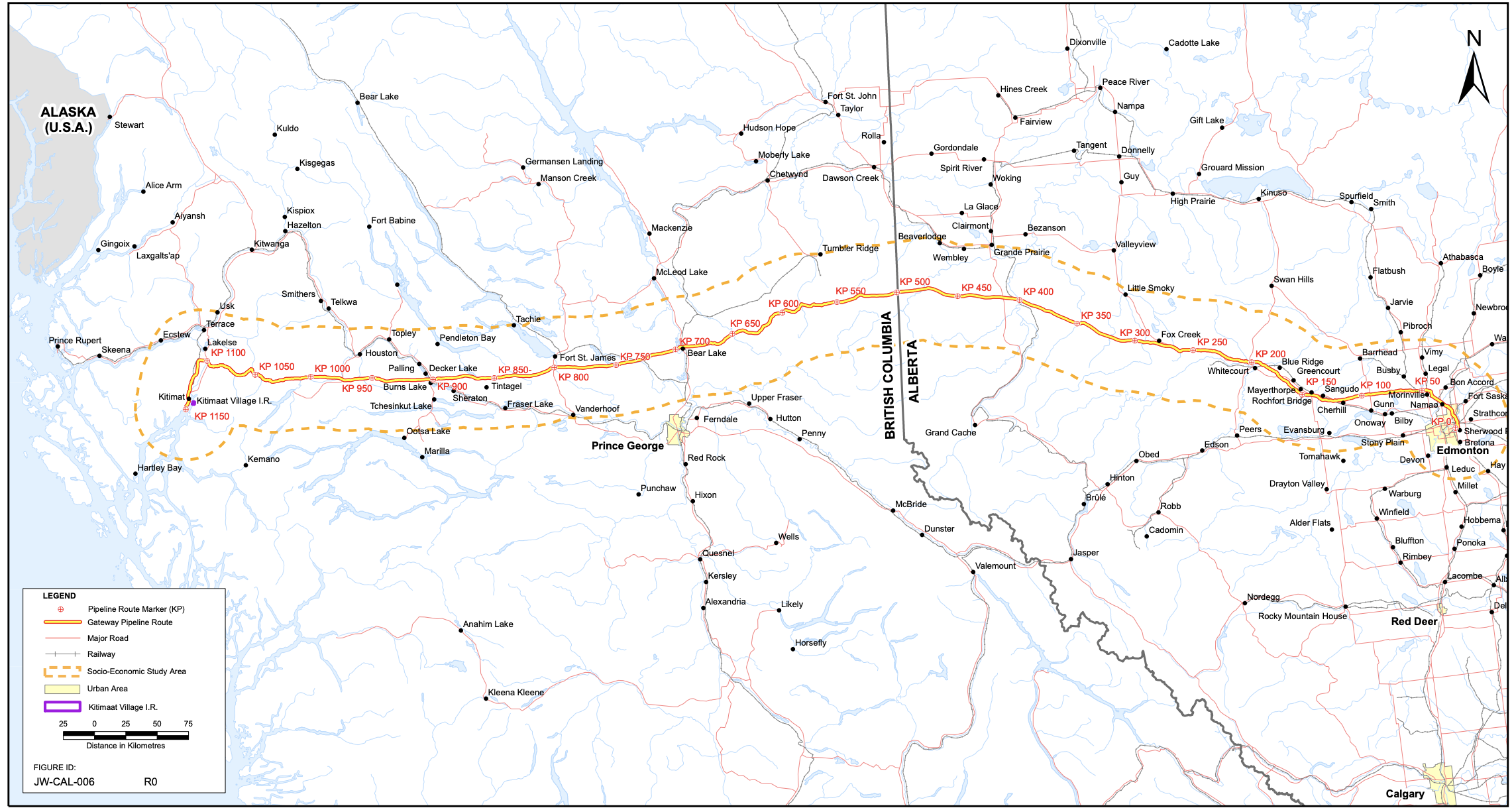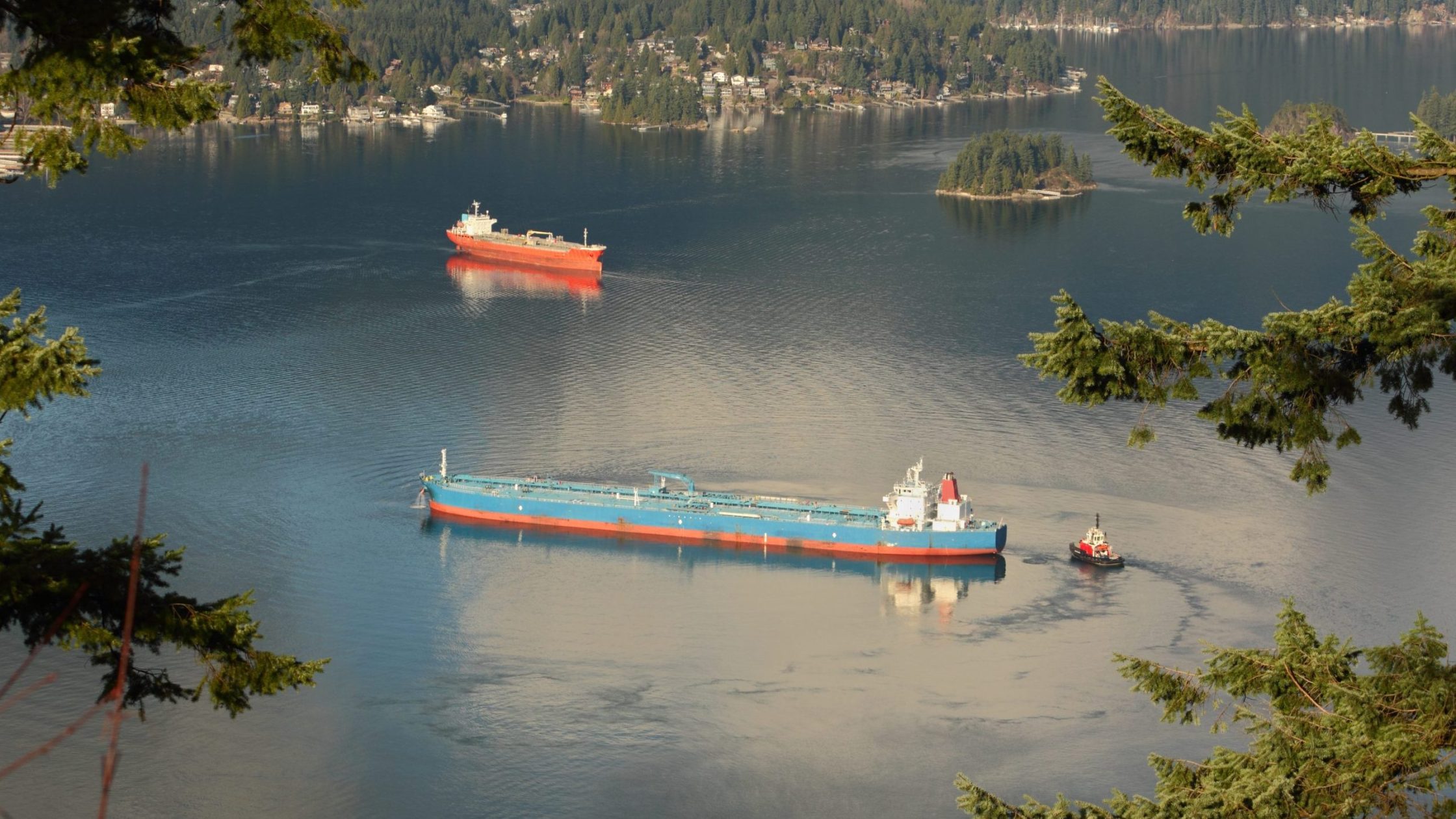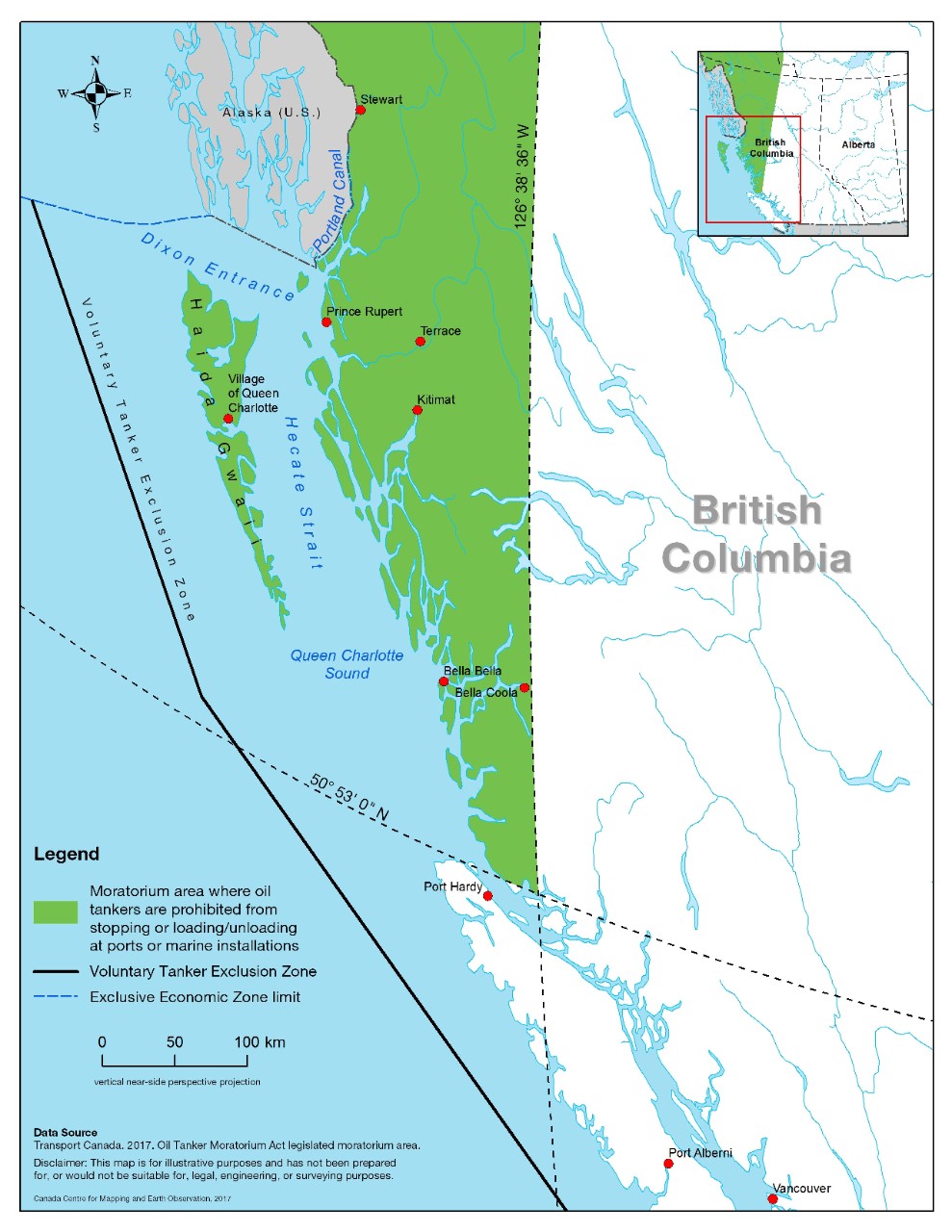The head of the National Coalition of Chiefs (NCC) is calling for the repeal of the oil tanker ban on B.C.’s north coast as Canada seeks “nation-building” projects to strengthen economic independence.
With short shipping times to hungry Asian markets, ports like Prince Rupert or Kitimat offer a strong business case – but only if the tankers can dock.
“No proponent is going to look at investing in a pipeline to the north coast with that kind of legislation in place,” says NCC founder and CEO Dale Swampy.
Formed in 2016, the NCC is a group of pro-development First Nation leaders including some who were equity partners in the cancelled Northern Gateway pipeline from Edmonton to Kitimat.
Canada’s Indigenous communities need projects, not lawsuits that hold them up, he says.

Original map of the proposed Northern Gateway Pipeline, submitted to regulators as part of a preliminary information package in October 2005. Map courtesy Canada Energy Regulator
Northern Gateway and the tanker ban
The tanker ban and Northern Gateway are intrinsically linked.
The moratorium contributed to the loss of Indigenous ownership stakes and an estimated $2 billion in economic opportunity for First Nations and Métis communities.
“We have consistently spoken up against this legislation, which directly affects the ability of our communities to participate in developing resources,” Swampy says.
With the aim to diversify markets for Canadian oil by reaching customers in Asia, Enbridge announced Northern Gateway in 2004.
The project’s 7,800-page regulatory application to the National Energy Board (NEB) – including more than 1,600 pages specific to marine safety – followed in May 2010.
In December 2013, after extensive assessment and public hearings, including with Indigenous communities, a three-member Joint Review Panel from the NEB and the Canadian Environmental Assessment Agency recommended the project to go ahead.
In June 2014, the federal government approved Northern Gateway with 209 conditions, including a requirement to fulfill over 400 voluntary commitments, many tied to marine safety.
After receiving approval, Northern Gateway’s management team and the project’s Aboriginal Equity Partners proposed an increase in Indigenous ownership from 10 per cent to 33 per cent.
They also created a joint governance structure where the communities and the company would have an equal voice.
The modified project would also incorporate First Nations and Métis environmental stewardship and monitoring using traditional science.
Meanwhile, legal actions were underway by environmental groups and Indigenous communities outside the equity partners.
By December 2014, the Federal Court of Appeal had consolidated multiple cases challenging the project’s approval.
Blocking the Northern Gateway pipeline and enacting a moratorium on oil tanker traffic on B.C.’s north coast became cornerstones of the Liberal Party’s 2015 election platform.
In November 2015, just a week after being sworn in, former Prime Minister Justin Trudeau instructed his transport minister to “formalize” the ban, a major setback for Northern Gateway.
Five months later, in June 2016 the Federal Court of Appeal overturned the government’s approval for the project, ruling that Canada had failed to fulfill its constitutional duty to consult Indigenous communities.
In November 2016, Trudeau officially rejected Northern Gateway, devastating hopes for the bands that would have become equity partners.
“Thirty-one of the 40 First Nations and Métis communities who were located on Northern Gateway’s right-of-way supported the pipeline, but a couple of communities backed by environmental groups were able to stop the entire project,” Swampy says.
“That’s not fair or democratic.”
In May 2017, Bill C-48, also known as the Oil Tanker Moratorium Act, was formally introduced in the House of Commons.
Indigenous communities stripped of opportunity
At the time, Swampy told the Financial Post that the communities saw the decision to reject Northern Gateway as political and not acting in the best interests of Canadians.
“They weren’t asked about the financial effect, the lost employment,” he said.
The implications of the tanker ban go far beyond the West Coast, Indian Resources Council CEO Stephen Buffalo told the Standing Senate Committee on Transport and Communications in March 2019.
Buffalo joined Swampy and other Indigenous leaders to speak to the committee as part of its consideration of Bill C-48.
Representing more than 130 First Nations that produce or have the potential to produce oil and gas, he said community prosperity is closely tied to the sector.
“The industry is suffering greatly from the lack of pipeline access…We need access to new markets to obtain fair value for our oil resources,” Buffalo said.
“We are struggling with addictions and depression, and people are losing hope. If we are ever going to make faster progress on these issues, our First Nations communities need more own-source revenues to fund cultural programs, sports programs or health activities for our young people,” he said.
“We need more jobs available for our people. We need them to earn good wages — wages that can support their families. Right now, Bill C-48 and other policies threaten all of that for us.”
Buffalo questioned the necessity of the tanker ban.
“I think all First Nations would support development of strict regulations that protect the environment, but that’s different from arbitrarily stopping just Canadian oil tanker activity,” he said.
The Senate approved the tanker ban and it became law upon Royal Assent on June 21, 2019.
Shifting times and new pipelines
Six years and the threat of U.S. tariffs later, the view on Canadian oil pipelines — and, potentially, the tanker ban itself — is shifting.
Growing public support for pipelines in recent opinion polls has encouraged Swampy.
So, too, has the change in attitudes towards development by coastal First Nations that have experienced the benefits of working with industry.
“Many of the coastal First Nations in northwestern B.C. are either building or looking at building LNG facilities. They appreciate the fact prosperity can be gained by partnering on these projects,” he says.
The NCC wants to see that same opportunity for the communities that would have benefited from Northern Gateway, through a new oil pipeline proposal to either Kitimat or Prince Rupert.
“We are hoping providing some certainty with Indigenous consultation and participation will give proponents some certainty they have a willing partner,” Swampy says.
To avoid lawsuits that delay or cancel projects and drive developers out of Canada, Swampy says agreements must, from the outset, unite leadership from proponents, governments and affected First Nations.
“We hope governments hear our message: we want projects, not lawsuits,” he says.
“Communities don’t need a cheque or a handout. They need the opportunity to participate in a meaningful way.”
The unaltered reproduction of this content is free of charge with attribution to the Canadian Energy Centre.

